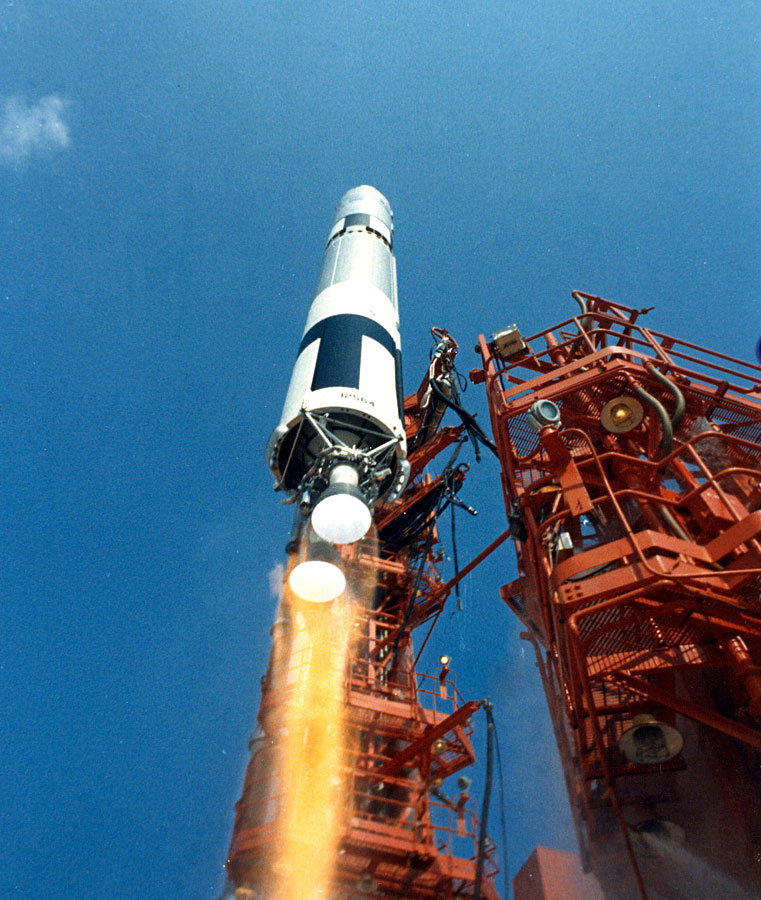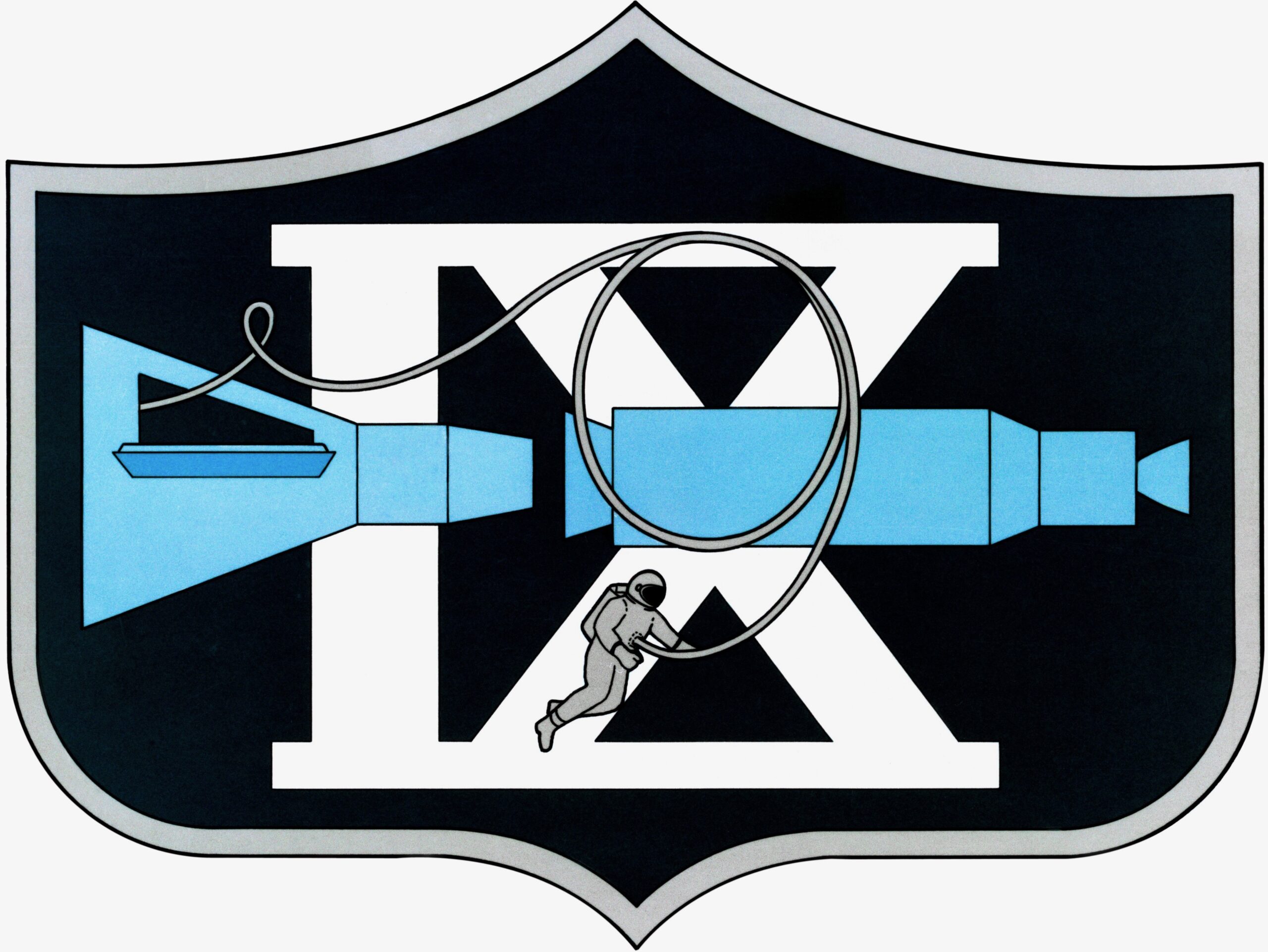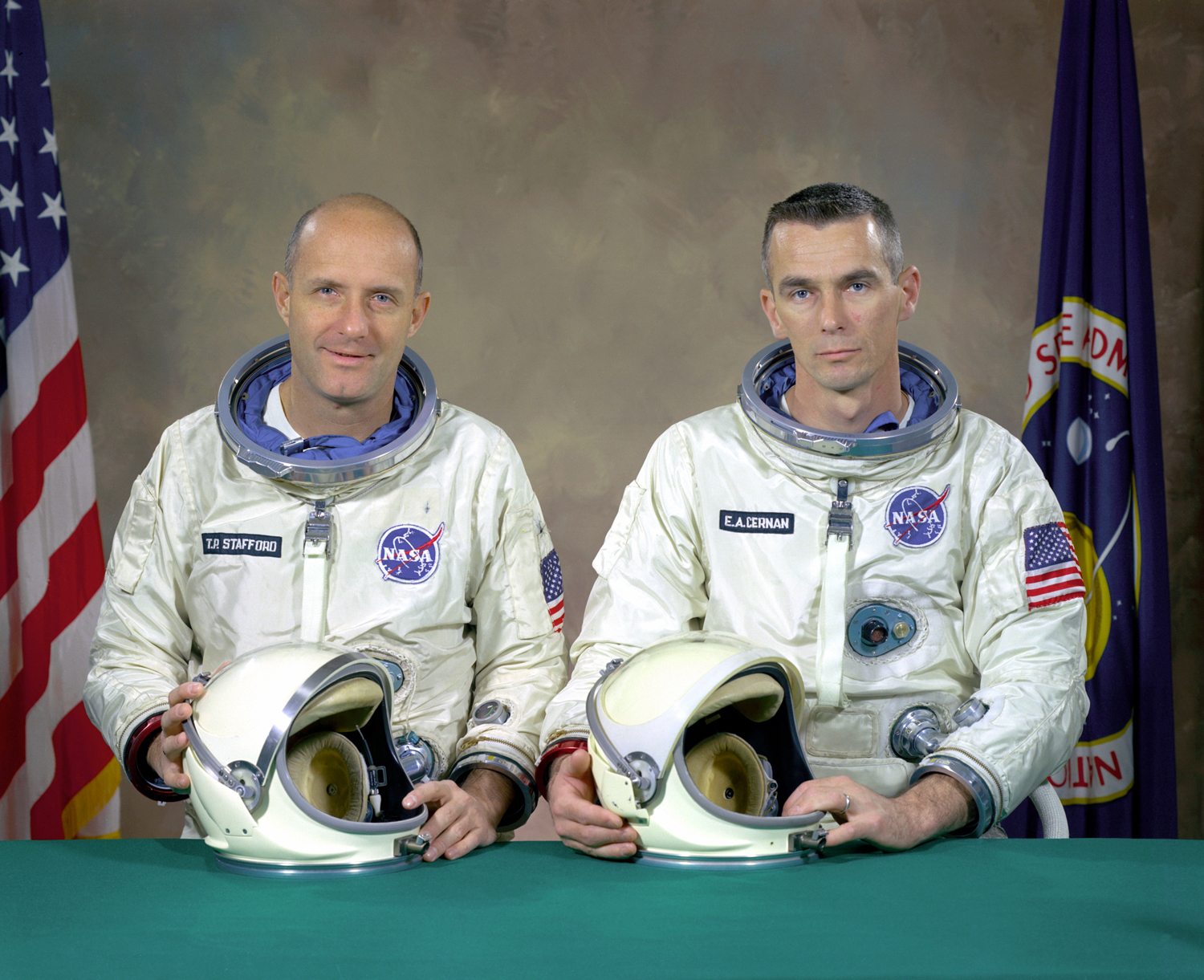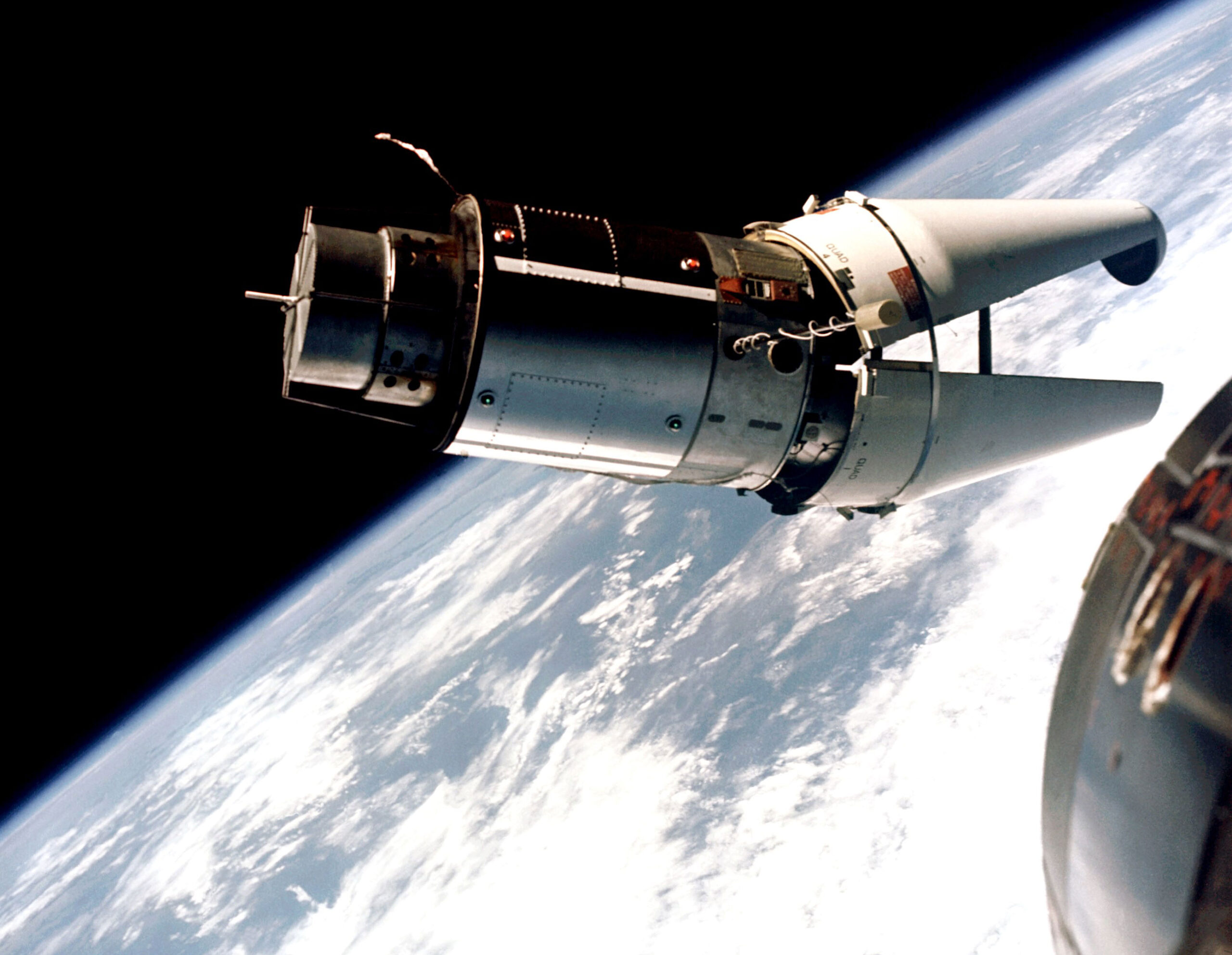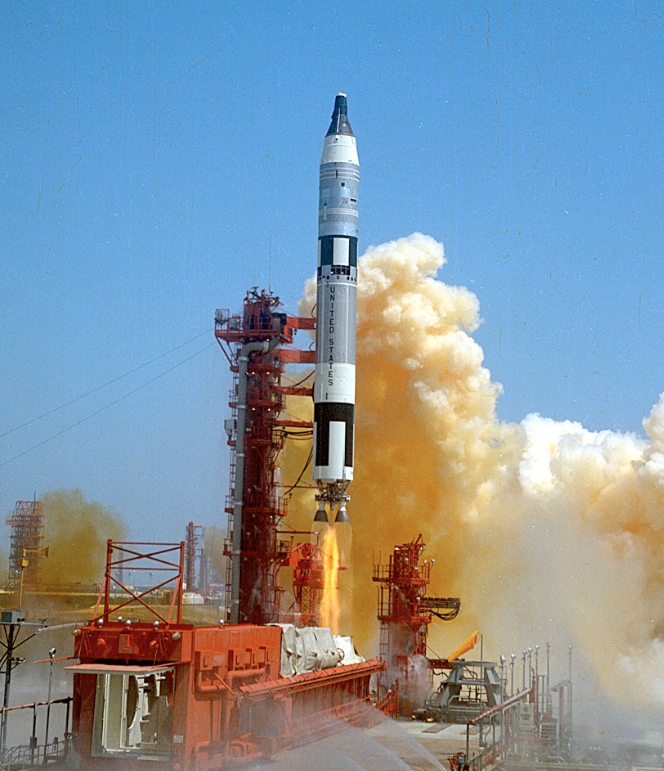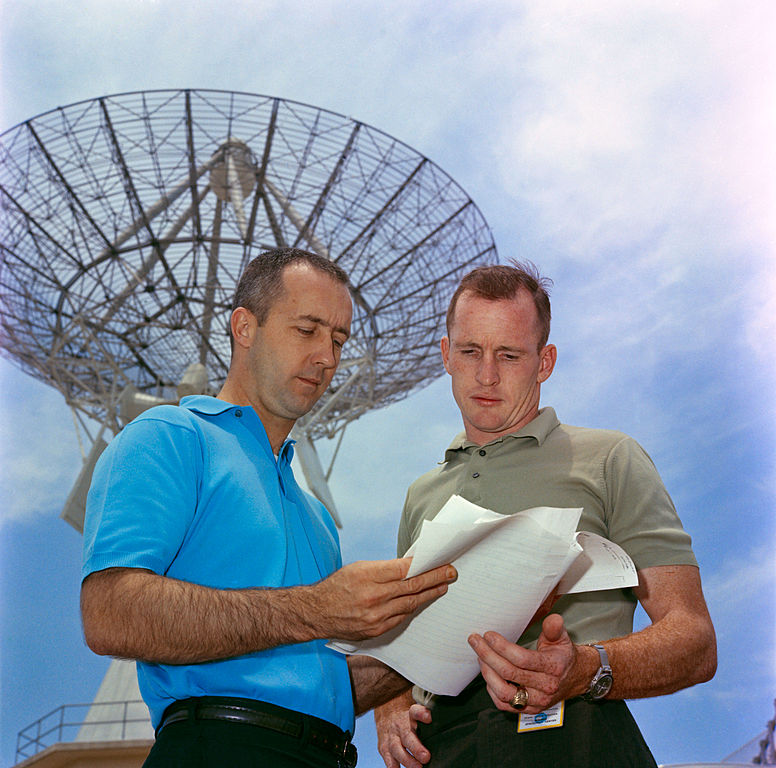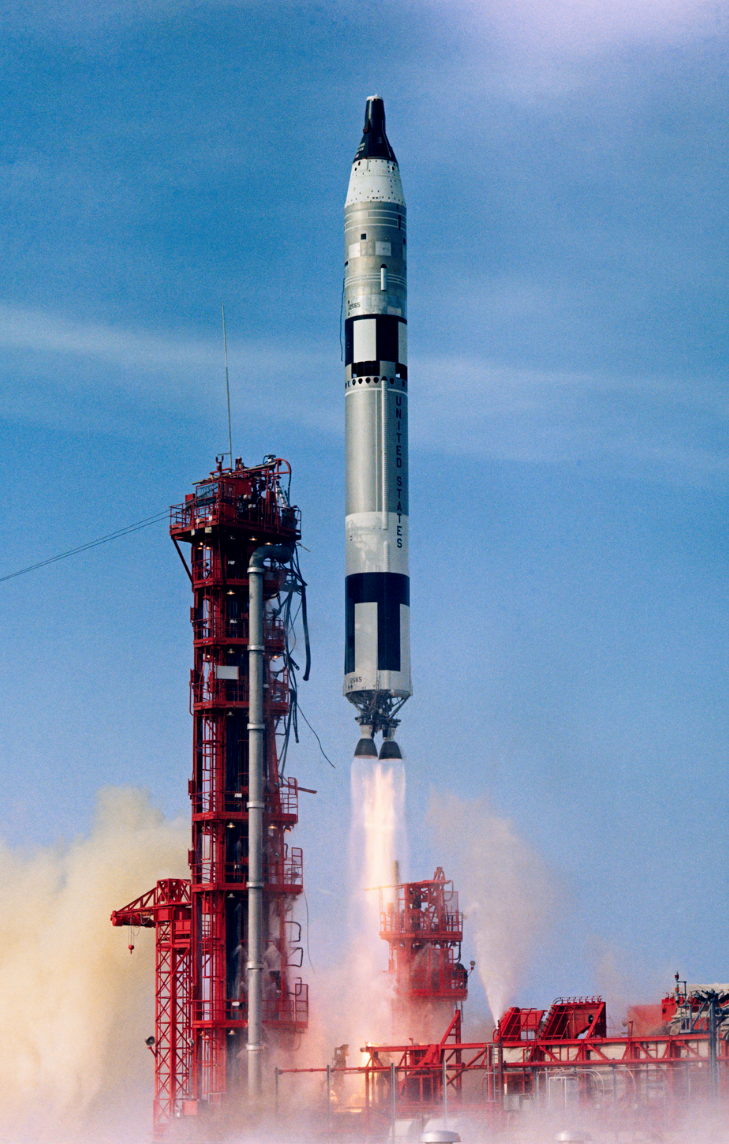
18 July 1966: At 22:20:26.648 UTC, Gemini 10 launched from Launch Complex 19 at the Cape Kennedy Air Force Station. The two astronauts aboard were John W. Young, on his second space flight, and Michael Collins. The launch vehicle was a liquid-fueled Martin SLV-4 Titan II, serial number 62-12565.
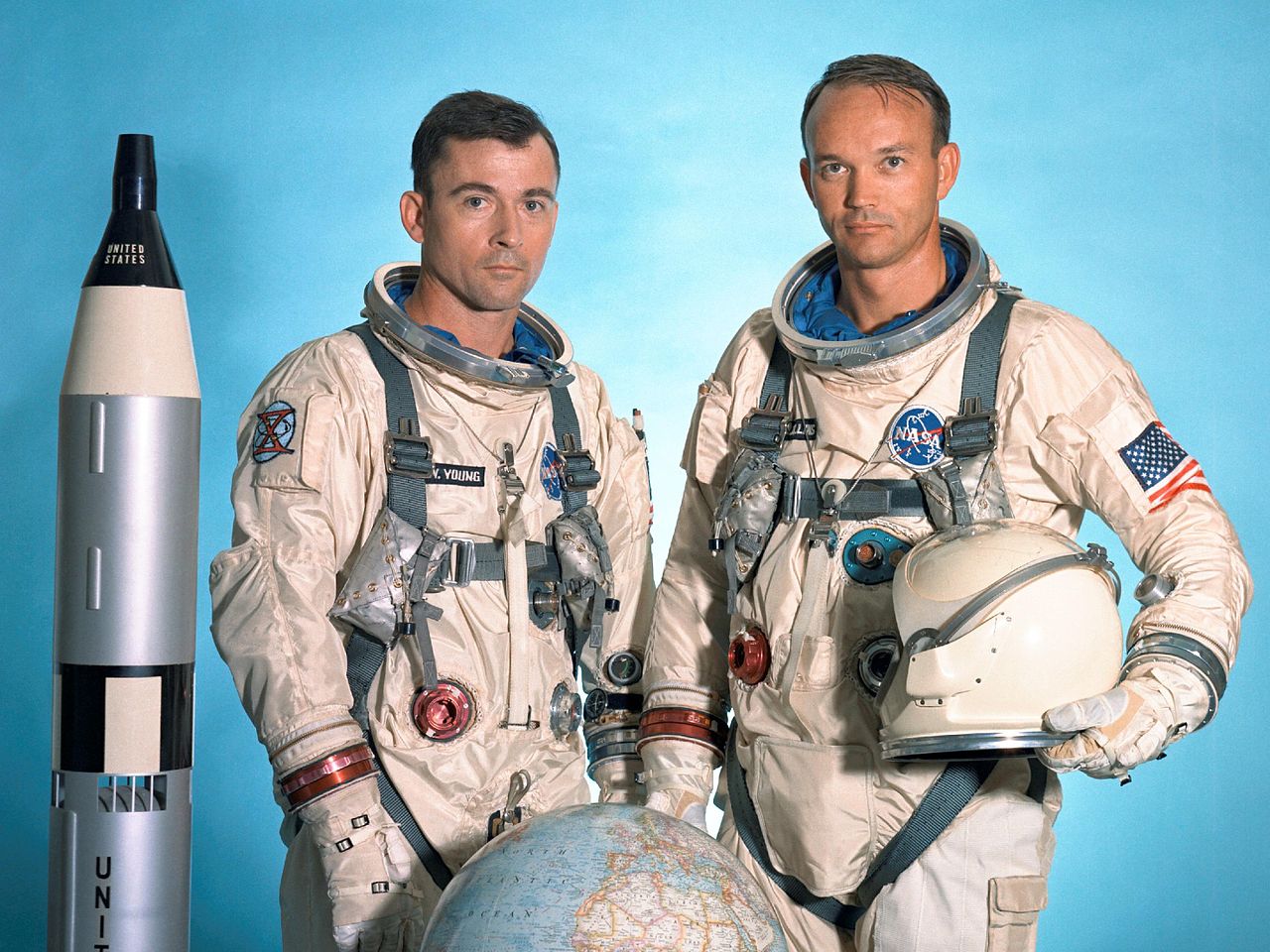
The objective of the Gemini 10 mission was to demonstrate orbital rendezvous and docking with another spacecraft, as well as “EVA”—Extra Vehicular Activity. The Gemini capsule docked with an Agena target vehicle which had been launched one hour before. The flight crew opened the hatches and Michael Collins stood in the opening, taking photographs.
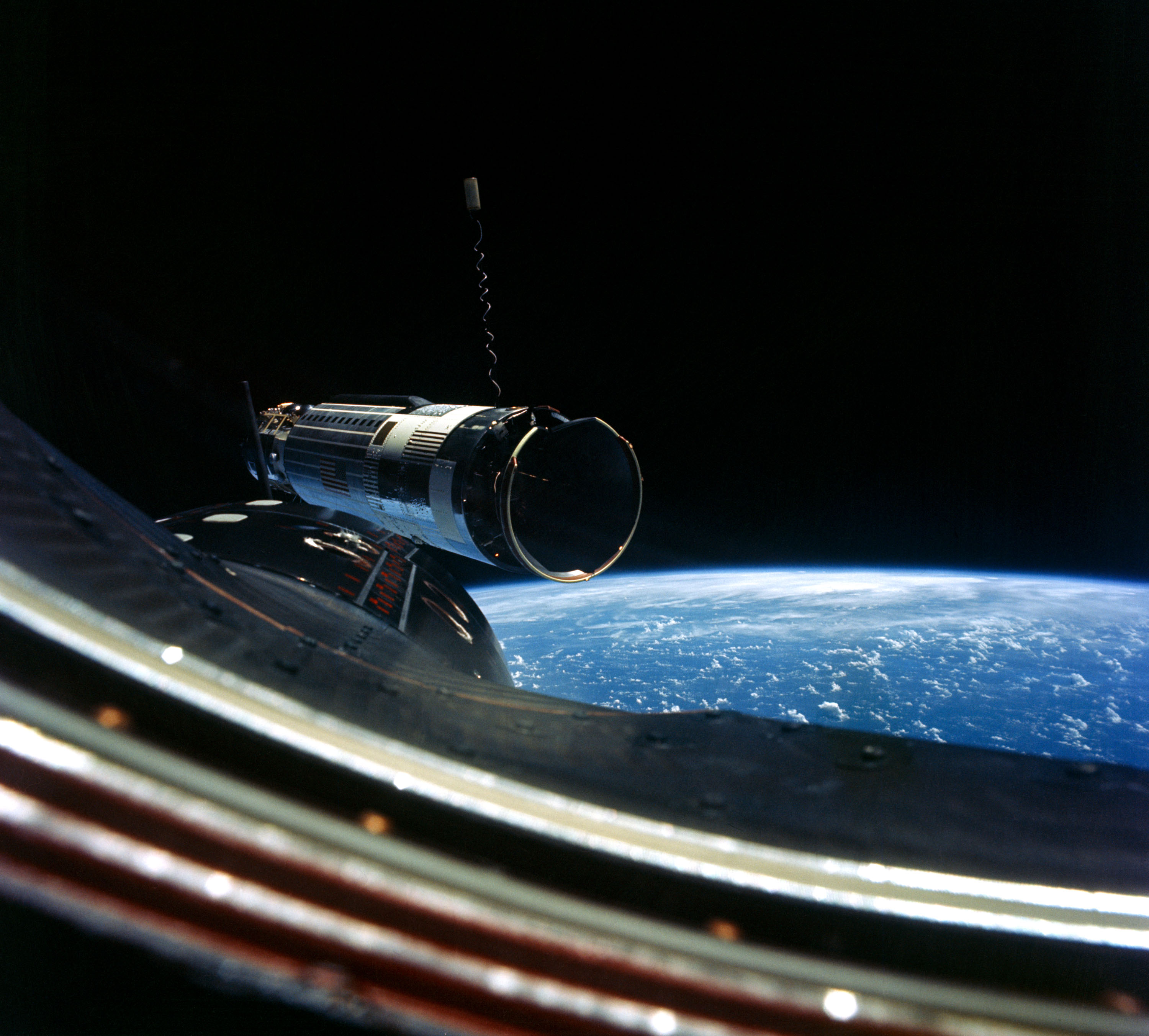
After undocking, the Gemini located and docked with another Agena from the earlier Gemini 8 flight. Collins this time left the capsule and retrieved some experiments from the dormant target vehicle before returning to Gemini 10.
After nearly three days in space, they landed in the Pacific Ocean, 3.86 miles (6.21 kilometers) from the primary recovery ship, USS Guadalcanal (LPH-7). This set a Fédération Aéronautique Internationale (FAI) Absolute World Record for Precision Landing.¹ The total duration of the flight was 2 days, 22 hours, 46 minutes, 39 seconds.
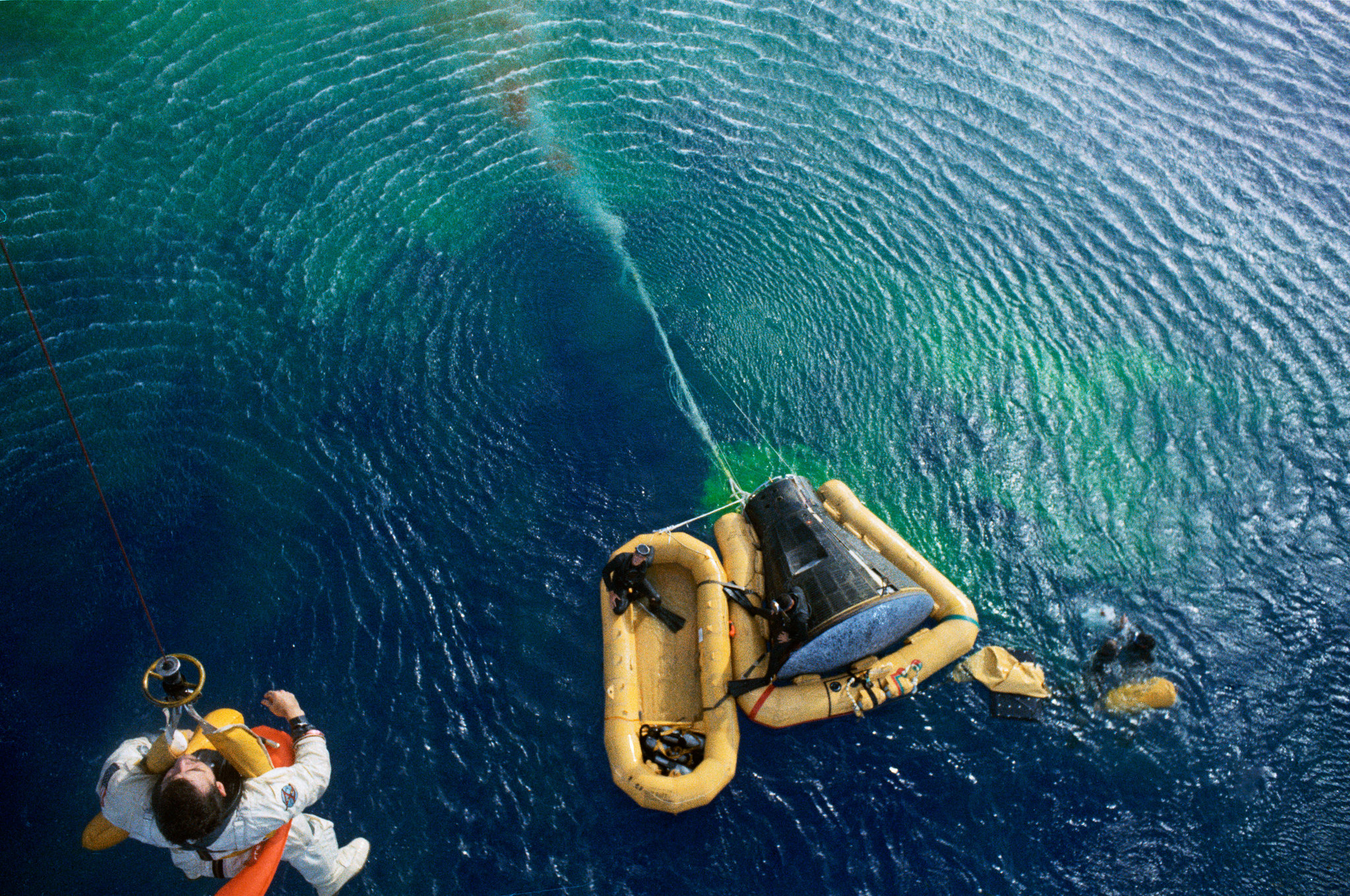
![]() The two-man Gemini spacecraft was built by the McDonnell Aircraft Corporation of St. Louis, the same company that built the earlier Mercury space capsule. The spacecraft consisted of a reentry module and an adapter section. It had an overall length of 19 feet (5.791 meters) and a diameter of 10 feet (3.048 meters) at the base of the adapter section. The reentry module was 11 feet (3.353 meters) long with a diameter of 7.5 feet (2.347 meters). The weight of the Gemini varied from ship to ship. At launch, Gemini 10 weighed 8,295 pounds (3763 kilograms).
The two-man Gemini spacecraft was built by the McDonnell Aircraft Corporation of St. Louis, the same company that built the earlier Mercury space capsule. The spacecraft consisted of a reentry module and an adapter section. It had an overall length of 19 feet (5.791 meters) and a diameter of 10 feet (3.048 meters) at the base of the adapter section. The reentry module was 11 feet (3.353 meters) long with a diameter of 7.5 feet (2.347 meters). The weight of the Gemini varied from ship to ship. At launch, Gemini 10 weighed 8,295 pounds (3763 kilograms).
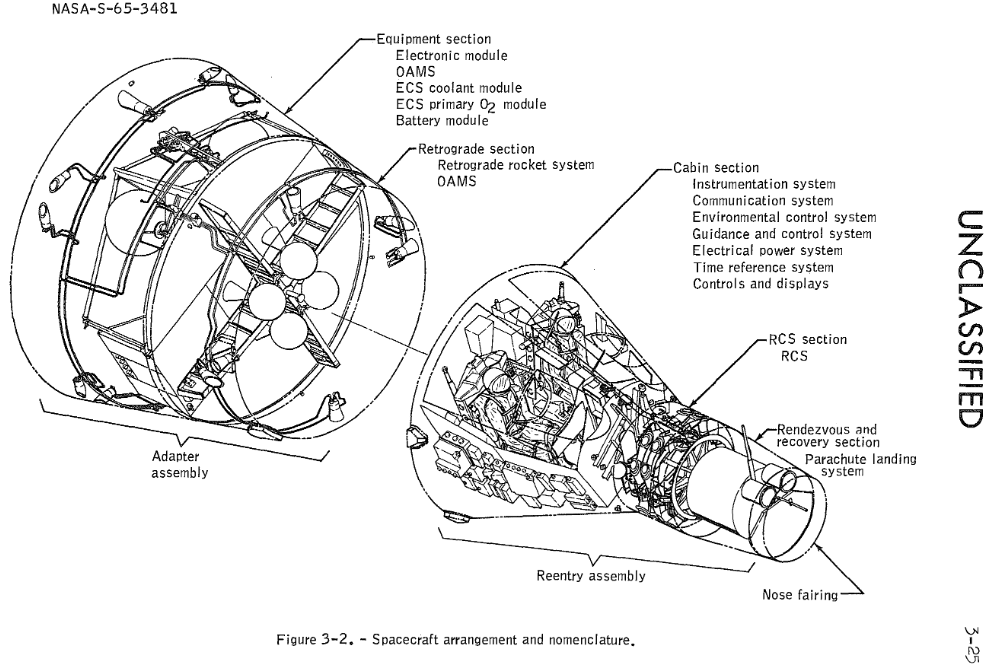
![]() The Titan II GLV was a “man-rated” variant of the Martin SM-68B intercontinental ballistic missile. It was assembled at Martin’s Middle River, Maryland, plant so as not to interfere with the production of the ICBM at Denver, Colorado. Twelve GLVs were ordered by the Air Force for the Gemini Program.
The Titan II GLV was a “man-rated” variant of the Martin SM-68B intercontinental ballistic missile. It was assembled at Martin’s Middle River, Maryland, plant so as not to interfere with the production of the ICBM at Denver, Colorado. Twelve GLVs were ordered by the Air Force for the Gemini Program.
The Titan II GLV was a two-stage, liquid-fueled rocket. The first stage was 63 feet (19.202 meters) long with a diameter of 10 feet (3.048 meters). The second stage was 27 feet (8.230 meters) long, with the same diameter.
![]() The 1st stage was powered by an Aerojet Engineering Corporation LR-87-7 engine which combined two combustion chambers and exhaust nozzles with a single turbopump unit. The engine was fueled by a hypergolic combination of hydrazine and nitrogen tetroxide. Ignition occurred spontaneously as the two components were combined in the combustion chambers. The LR-87-7 produced 430,000 pounds of thrust.² It was not throttled and could not be shut down and restarted. The 2nd stage used an Aerojet LR-91 engine which produced 100,000 pounds of thrust.³
The 1st stage was powered by an Aerojet Engineering Corporation LR-87-7 engine which combined two combustion chambers and exhaust nozzles with a single turbopump unit. The engine was fueled by a hypergolic combination of hydrazine and nitrogen tetroxide. Ignition occurred spontaneously as the two components were combined in the combustion chambers. The LR-87-7 produced 430,000 pounds of thrust.² It was not throttled and could not be shut down and restarted. The 2nd stage used an Aerojet LR-91 engine which produced 100,000 pounds of thrust.³
The Gemini/Titan II GLV combination had a total height of 109 feet (33.223 meters) and weighed approximately 340,000 pounds (154,220 kilograms) when fueled.⁴
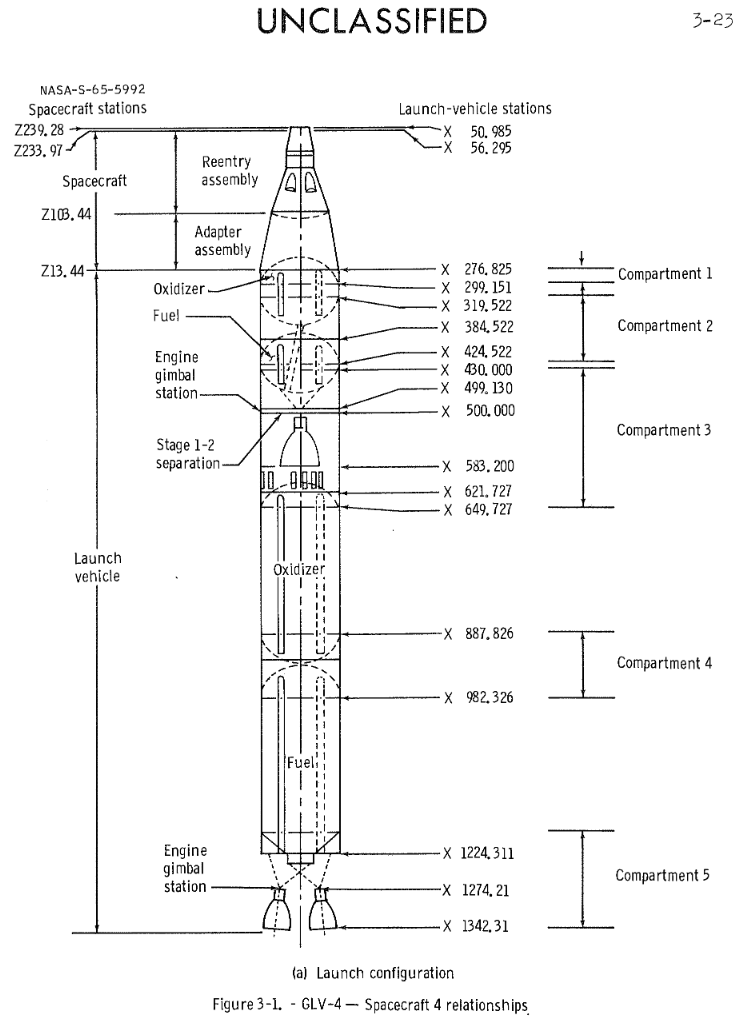
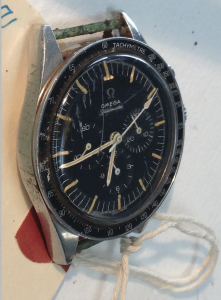
Both astronauts went on to the Apollo program, with Collins serving as Command Module Pilot for the Apollo 11 lunar landing mission, and John Young as CMP for Apollo 10. Young commanded Apollo 16, and the first space shuttle flight, Columbia STS-1 and Columbia STS-9. He was scheduled to command STS-61J to deploy the Hubble Space Telescope, but that flight was put off by the Challenger disaster. Michael Collins went on to head the National Air and Space Museum and LTV Aerospace.
Gemini 10 is at the Kansas Cosmosphere and Space Center, awaiting restoration.
¹ FAI Record File Number 10285
² The Gemini 10 first stage engine produced a flight average of 462,750 pounds of thrust (2,058.42 kilonewtons).
³ The Gemini 10 second stage engine produced a flight average of 99,168 pounds of thrust (441.12 kilonewtons).
⁴ Gemini 10/Titan II GLV combination weighed 344,856 pounds (156,424 kilograms) at 1st Stage ignition.
© 2018, Bryan R. Swopes
